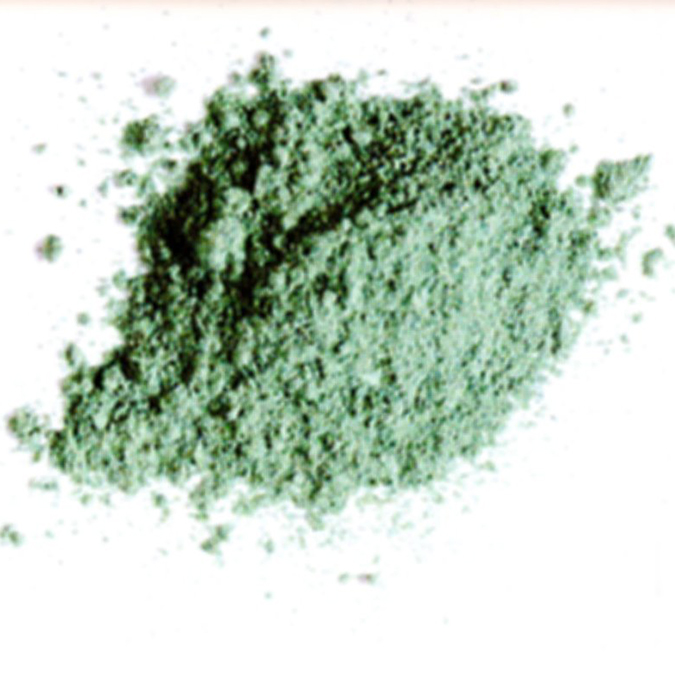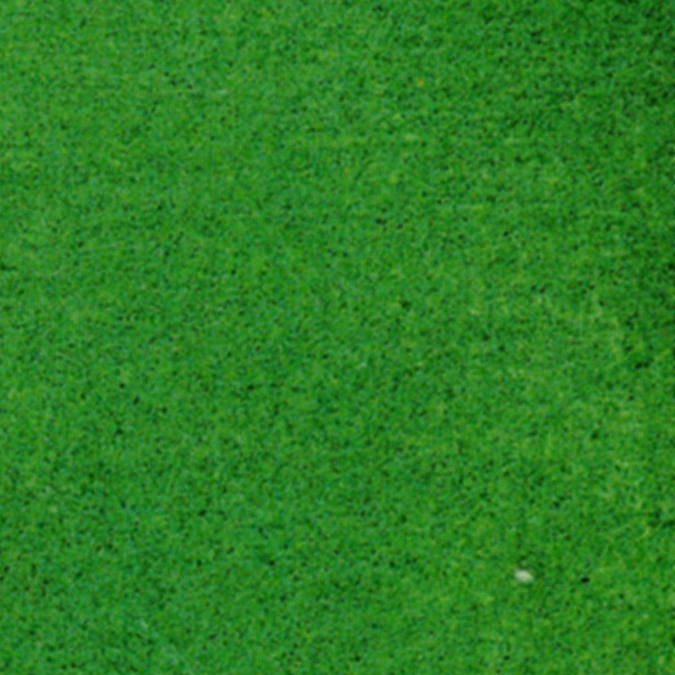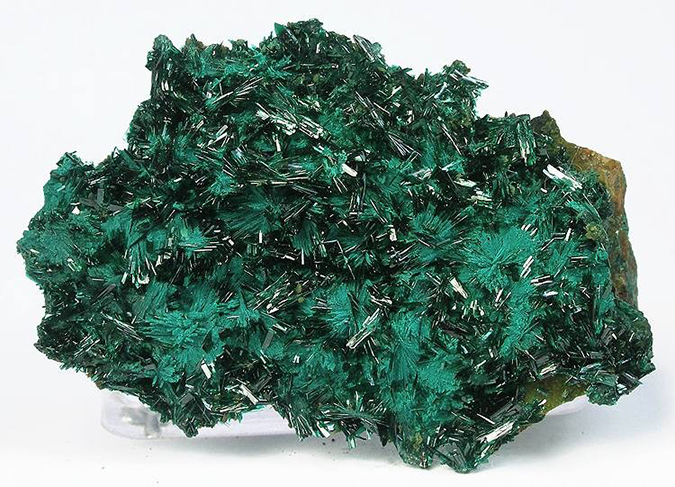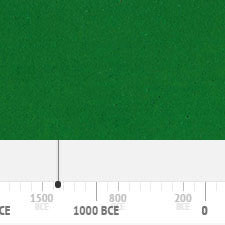Atacamite
Natural inorganic pigmentComposition and Properties of Atacamite
Antlerite is a basic copper chloride with the chemical formula of Cu2Cl(OH)3.

Pigment

Painted swatch
Names
Alternative names
Wild patina, flour patina, bronze disease
Color Index
Word Origin
Named after the Atacama desert in Chile where it was first found and described.
Atacamit
German
Atacamite
French
Atacamite
Italian
Atacamita
Spanish
Preparation
The pigment can be prepared from the mineral antlerite by grounding, washing, and levigating the raw material.
Atacamite was also prepared synthetically by covering a copper plate with honey and sprinkling it with common salt (sodium chloride) (1).
References
(1) M. M. Naumova and S. A. Pisareva, A Note on the use of blue and green copper compounds in paintings, Studies in Conservation, Nov. 1994, Vol. 39, No. 4, pp. 277-283. https://doi.org/10.1179/sic.1994.39.4.277
History of Use
Atacamite has been used since antiquity. It has been found in illuminated manuscripts, sculptures, and oil paintings.
References
(1) Švarcová, S., Hradil, D., Hradilová, J. et al. Pigments—copper-based greens and blues. Archaeol Anthropol Sci 13, 190 (2021). https://doi.org/10.1007/s12520-021-01406-0
(2) M. M. Naumova and S. A. Pisareva, A Note on the use of blue and green copper compounds in paintings, Studies in Conservation, Nov. 1994, Vol. 39, No. 4, pp. 277-283. https://doi.org/10.1179/sic.1994.39.4.277
(3) Anders G. Nord and Kate Tronner, The Frequent Occurrence of Atacamite in Medieval Swedish Murals, STUDIES IN CONSERVATION, 2018, Vol. 63, No. 8, 477–481.
https://doi.org/10.1080/00393630.2018.1444966
(4) Tomasini, E.P., Landa, C.R., Siracusano, G. and Maier, M.S. (2013), Atacamite as a natural pigment in a South American colonial polychrome sculpture from the late XVI century. J. Raman Spectrosc., 44: 637-642. https://doi.org/10.1002/jrs.4234
(5) Richardin, P., Mazel, V., Walter, P. et al. Identification of Different Copper Green Pigments in Renaissance Paintings by Cluster-TOF-SIMS Imaging Analysis. J. Am. Soc. Mass Spectrom. 22, 1729–1736 (2011). https://doi.org/10.1007/s13361-011-0171-3
Identification
Infrared Spectra
1. IR Spectrum of malachite in the ATR-FT-IR spectra of different pure inorganic pigments, University of Tartu, Estonia.
Raman Spectra
Atacamite a CAMEO Material Database
References
Andrea De Haro,Milagros Córdova, Carlos Rua Landa, Cristián Huck-Iriart, Gabriela Siracusano, Marta S. Maier andEugenia Tomasini, Methodologies for the Characterization and Identification of Natural Atacamite as a Pigment in Andean Colonial Painting, Heritage 2023, 6(7), 5116-5129. https://doi.org/10.3390/heritage6070272
Further Reading
References
(1) Švarcová, S., Hradil, D., Hradilová, J. et al. Pigments—copper-based greens and blues. Archaeol Anthropol Sci 13, 190 (2021). https://doi.org/10.1007/s12520-021-01406-0
(2) M. M. Naumova and S. A. Pisareva, A Note on the use of blue and green copper compounds in paintings, Studies in Conservation, Nov. 1994, Vol. 39, No. 4, pp. 277-283. https://doi.org/10.1179/sic.1994.39.4.277
(3) Anders G. Nord and Kate Tronner, The Frequent Occurrence of Atacamite in Medieval Swedish Murals, STUDIES IN CONSERVATION, 2018, Vol. 63, No. 8, 477–481.
https://doi.org/10.1080/00393630.2018.1444966
(4) Tomasini, E.P., Landa, C.R., Siracusano, G. and Maier, M.S. (2013), Atacamite as a natural pigment in a South American colonial polychrome sculpture from the late XVI century. J. Raman Spectrosc., 44: 637-642. https://doi.org/10.1002/jrs.4234
(5) Richardin, P., Mazel, V., Walter, P. et al. Identification of Different Copper Green Pigments in Renaissance Paintings by Cluster-TOF-SIMS Imaging Analysis. J. Am. Soc. Mass Spectrom. 22, 1729–1736 (2011). https://doi.org/10.1007/s13361-011-0171-3


